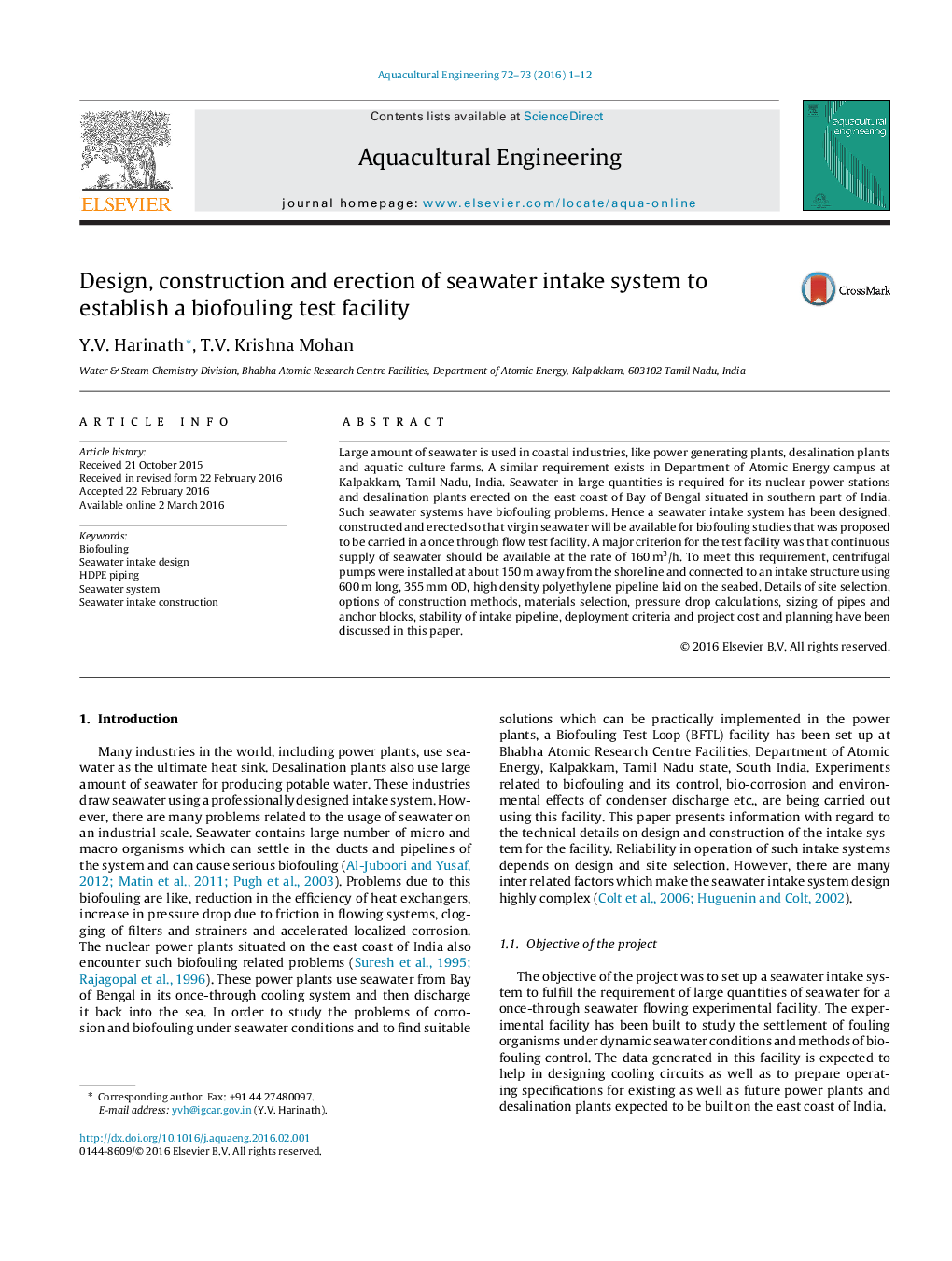| Article ID | Journal | Published Year | Pages | File Type |
|---|---|---|---|---|
| 4527116 | Aquacultural Engineering | 2016 | 12 Pages |
•Sea water intake pipe line was designed with onshore pump room.•Material selection was carried out after analyzing various aspects.•HDPE pipes were welded, tested and deployed in the sea.•The sea water intake system was successfully commissioned and being operated.•There was need for continuous supply of sea water to carryout biofouling experiment.
Large amount of seawater is used in coastal industries, like power generating plants, desalination plants and aquatic culture farms. A similar requirement exists in Department of Atomic Energy campus at Kalpakkam, Tamil Nadu, India. Seawater in large quantities is required for its nuclear power stations and desalination plants erected on the east coast of Bay of Bengal situated in southern part of India. Such seawater systems have biofouling problems. Hence a seawater intake system has been designed, constructed and erected so that virgin seawater will be available for biofouling studies that was proposed to be carried in a once through flow test facility. A major criterion for the test facility was that continuous supply of seawater should be available at the rate of 160 m3/h. To meet this requirement, centrifugal pumps were installed at about 150 m away from the shoreline and connected to an intake structure using 600 m long, 355 mm OD, high density polyethylene pipeline laid on the seabed. Details of site selection, options of construction methods, materials selection, pressure drop calculations, sizing of pipes and anchor blocks, stability of intake pipeline, deployment criteria and project cost and planning have been discussed in this paper.
